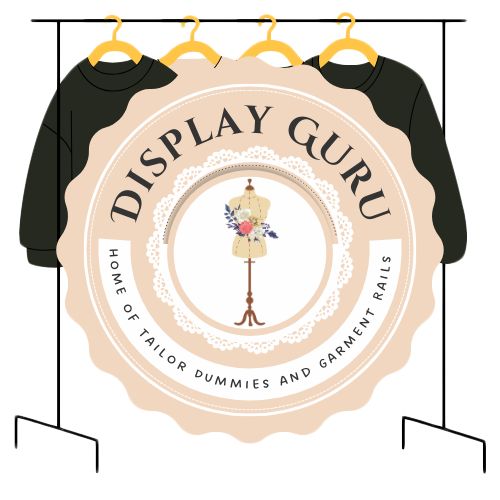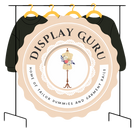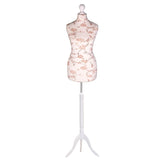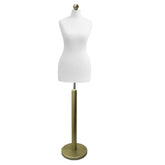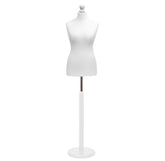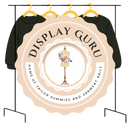Choosing Cutting and Sewing Tables
Ever tried to cut a perfectly straight line on a wobbly dining table? It’s a bit like a chef trying to prepare a gourmet meal on a tiny, unstable chopping board. It just doesn't work. The right cutting and sewing table isn't just another piece of furniture; it's the very foundation of your craft, the tool that ensures precision, comfort, and a smooth workflow. Think of this guide as the introduction to the new central hub of your creative process.
Finding the Foundation for Your Creative Work

The journey from a simple piece of fabric to a finished garment is all about precision and patience. Every cut must be exact, and every seam perfectly straight. When you use a makeshift surface, like a dining table or even the floor, you're introducing unnecessary hurdles—instability, poor ergonomics, and a general lack of space that can quickly turn a passion project into a frustrating chore.
A purpose-built cutting and sewing table completely changes the game. It gives you the stability your sewing machine needs to run without vibrating all over the place and offers a large, uninterrupted surface for laying out patterns and fabric. This isn't just a matter of convenience; it’s about elevating the quality of your work from looking homemade to truly professional.
Why a Dedicated Table Matters
Your workspace is the stage for your creativity. A proper table sets that stage perfectly, letting you focus on your craft instead of battling your environment. The core benefits of investing in the right surface become obvious almost immediately.
- Enhanced Precision and Accuracy: A flat, stable surface is non-negotiable for accurate cutting. It stops fabric from shifting, ensuring your pattern pieces are true to size—the crucial first step for a garment that fits well.
- Improved Ergonomics and Comfort: Let's be honest, most standard tables are either too high for comfortable sewing or too low for cutting without hunching over. This leads to back, neck, and shoulder strain. A correctly sized table promotes better posture, so you can work for longer without the aches and pains.
- A Smoother Workflow: When everything has its place—from built-in storage for your tools to an expansive area for assembly—your whole process becomes more organised. You’ll spend less time hunting for scissors or clearing clutter and more time actually creating.
A dedicated cutting and sewing table is the command centre for your projects. It’s where your ideas take physical form, and having the right foundation makes the journey from concept to creation as seamless as possible.
From Hobbyist to Professional
Whether you're a weekend hobbyist making quilts or a professional tailor crafting bespoke suits, the basic principles are the same. The scale of your projects and how often you work will certainly influence the specific features you need, but the fundamental requirement for a stable, comfortable, and organised workspace is universal. This guide is here to help you assess your space, understand the key features, and ultimately choose the perfect table for your craft.
Exploring Different Types of Sewing Tables
When you start looking, you’ll find the world of cutting and sewing tables is far more varied than you might think. Choosing the right one is a bit like an artist picking their perfect workspace. A dedicated cutting table, for example, is like a professional painter's easel—purpose-built for one crucial task. A compact sewing cabinet, on the other hand, is more like a trusty multi-tool, packing impressive versatility into a small, neat package.
Getting to grips with these differences is the key to finding a table that doesn't just fit your space, but actively improves your creative flow. Each type is designed with a specific person and purpose in mind, from the hobbyist in a spare room to a professional running a busy studio. Let's break down the main categories to help you find your perfect match.
Multi-Purpose Craft Tables
Think of the multi-purpose craft table as the dependable all-rounder of the sewing world. These tables are usually large, flat, and sturdy, designed to handle a whole host of creative projects, not just sewing. They're a fantastic choice for crafters who also enjoy scrapbooking, painting, or anything else that demands a generous amount of elbow room.
Their biggest plus is their versatility. You can be cutting out large fabric patterns one day and assembling a model the next. The main drawback, however, is that they tend to lack specialised features, like a recessed platform for your sewing machine. This means your machine sits on top of the surface, which isn't always the most ergonomic position for longer sewing sessions.

As you can see, beyond just a simple flat surface, it’s features like height adjustment and built-in storage that really transform a basic table into a functional sewing station.
Ergonomic Height-Adjustable Tables
If you spend hours at a time on your craft, an ergonomic height-adjustable table is nothing short of a game-changer. These models let you change the table’s height, either with a crank or electronically, so you can switch seamlessly from a comfortable sitting height for sewing to a standing height for cutting. This simple adjustment does wonders for preventing the back and neck strain that comes from hunching over a surface that’s too low.
A study on workplace ergonomics revealed that alternating between sitting and standing can reduce upper back and neck pain by 54%. While the study focused on office work, the principle is just as relevant to the varied postures of sewing and cutting.
These tables are a brilliant investment for any sewist who puts a premium on comfort and their long-term health. The main downside can be the price tag, as the adjustment mechanisms make them more expensive than their fixed-height counterparts. They also might not have as much built-in storage as a traditional cabinet. To dig deeper into finding the right furniture, have a look at our comprehensive guide on selecting a sewing and cutting table.
Space-Saving and Folding Tables
Just because you're short on space doesn't mean you have to give up on having a dedicated sewing area. Space-saving and folding tables are ingeniously designed for smaller homes and flats. Many look like small, discreet cabinets when packed away, but they unfold to reveal a surprisingly generous work surface and clever storage nooks.
Their biggest advantage is their small footprint. When you’re done for the day, you can simply fold the table away and get your living space back. The trade-off, however, is often stability. While they're perfectly fine for most domestic sewing machines, they might not be sturdy enough to handle the vibrations of a heavy-duty or industrial machine without a bit of a wobble. They are the ideal solution for hobbyists whose creative space also needs to be a dining room or home office.
To help you visualise the options, here is a quick breakdown of the common table types.
Comparison of Common Table Types
This comparison of cutting and sewing table types should help you find the best fit for your projects and workspace.
| Table Type | Best For | Key Advantage | Main Consideration |
|---|---|---|---|
| Multi-Purpose Craft Table | Hobbyists with multiple creative interests | Large, versatile work surface | Lacks sewing-specific features like a machine lift |
| Height-Adjustable Table | Serious sewists spending long hours at their craft | Excellent ergonomics, reduces physical strain | Higher price point and potentially less storage |
| Folding/Cabinet Table | Sewists with limited space | Folds away to a small footprint | Can be less stable for heavy-duty machines |
Ultimately, whether you need a versatile workhorse or a clever space-saver, understanding these core designs is the first step toward creating a sewing setup that truly works for you.
Essential Features That Improve Your Workflow

The little details are what take a good sewing project into great territory, and the very same principle applies to your workspace. The specific features of cutting and sewing tables are what distinguish a merely functional surface from a truly high-performance creative hub. Understanding these elements is key to choosing a table that actively supports and improves your entire process.
It all starts with the most fundamental part: the work surface itself. The quality and type of material here can make a world of difference. A smooth laminate finish, for instance, is absolutely essential when you're working with delicate fabrics like silk or satin, as it prevents those costly and frustrating snags.
For a quilter, on the other hand, the main priority might be a huge, uninterrupted surface that can handle a king-size quilt or a large self-healing cutting mat without compromise. The surface is where the magic happens, so making sure it’s right for your craft is paramount.
Stability: The Unsung Hero
Ever tried to sew a precise seam while your machine vibrates and bounces across the table? It's a surefire recipe for crooked stitches and a whole lot of frustration. This is where stability steps in as the unsung hero of any quality sewing table.
A sturdy, well-built frame is designed to absorb the vibrations of even the most powerful machines. This rock-solid foundation ensures your stitches are perfectly even and your cuts are true. Look for tables with robust legs, cross-bracing, and a decent weight to them—these are all hallmarks of a stable workspace that won’t let you down.
Maximising Your Space with Smart Design
The best cutting and sewing tables are more than just a flat top. They incorporate smart features designed to streamline your workflow and keep you organised. These thoughtful additions transform your table from a passive surface into an active partner in your creative process.
Three of the most impactful features to look for are:
- Expandable Drop-Leaves: These hinged extensions are a game-changer for anyone who needs a large cutting area but is short on space. Fold them down when they’re not needed, then simply raise them to accommodate large patterns or fabric layouts.
- Built-in Measuring Grids: Some tabletops come with a measurement grid printed directly on the surface. This is incredibly handy for making quick cuts and checks, saving you from constantly reaching for a tape measure and reducing the chance of error.
- Integrated Storage: Having your essential tools within arm's reach is a massive time-saver. Integrated drawers, shelves, and cubbies keep your scissors, thread, and bobbins tidy and accessible. To dig deeper into this, check out our detailed guide on choosing a sewing table with storage.
Your sewing table shouldn't just hold your projects; it should actively help you complete them. Features like expandable leaves and built-in grids are designed to remove friction from your workflow, letting you focus entirely on your craft.
Features for Professional Precision
For those in professional settings, the demands are even higher. The UK’s bespoke cutting table manufacturing sector often caters to fashion and textile studios that require absolute precision, durability, and ergonomic design. High-end fashion designers, for example, place a huge emphasis on fabric safety and surface smoothness to maintain the quality of their luxury products.
In these environments, innovative features such as fabric roll holders and integrated storage make these tables indispensable tools in UK textile workshops. You can learn more about how bespoke tables support the UK textile industry at cuttingtable.co.uk.
Ultimately, every feature on a cutting and sewing table serves a distinct purpose. By carefully considering which ones align with your specific projects and habits, you can select a table that not only fits your space but also significantly boosts your efficiency and enjoyment.
Choosing the Right Size for Your Space
Finding the perfect size for your cutting and sewing table can feel a bit like a game of Tetris. You've got big dreams for your projects, but you're also working with the reality of your room's dimensions. Nailing this decision is more important than you might think; it's not just about fitting furniture into a space, but about creating an environment that supports good posture, boosts your accuracy, and makes your creative process flow smoothly.
Imagine trying to piece together a massive quilt on a small side table. You'd be constantly fighting with fabric spilling onto the floor, leading to frustration and inaccurate cuts. On the flip side, a table that's far too large can swallow a room whole, making it feel cluttered and difficult to move around in.
The goal is to find that sweet spot—a table that's generous enough for your most ambitious ideas but still feels right at home in your space.
Measure Your Space First
Before you even start browsing, it's time to get reacquainted with your tape measure. First things first, map out the actual footprint you have available. Measure the length and width of the area you have in mind for the table.
But don't stop there. You need to think about your "working room"—the essential space around the table that lets you move, open drawers, or pull up a chair without feeling boxed in. A good rule of thumb is to leave at least 90cm (about 3 feet) of clear space on the sides you'll be using most. This buffer is crucial for creating an efficient workflow and lets you move around freely without tripping over furniture. For more tips on setting up your workspace, check out our guide packed with practical sewing room ideas.
How Table Dimensions Affect Your Craft
The size of your table isn't just about logistics; it has a direct impact on your comfort and the quality of your work. The length and depth aren't just numbers on a spec sheet—they play very different, but equally important, roles in your daily crafting.
Let's break down why each measurement is so critical:
- Table Length: Think of this as your main stage for cutting and laying out fabric. A longer table is a game-changer, allowing you to spread out large patterns or fabric pieces in one go. For quilters or anyone making dresses, this is non-negotiable. It stops the material from draping over the edge, which can distort the fabric and lead to wonky cuts.
- Table Depth: The depth (from front to back) is all about your posture and workflow. A deeper surface gives your sewing machine a solid base while leaving plenty of room in front for fabric to rest and behind for your project to gather without ending up in a heap on the floor. It’s what keeps you from feeling cramped and hunched over.
Choosing the right size isn't just a logistical decision; it's an ergonomic one. The dimensions of your table directly influence how you sit or stand, which in turn affects your physical comfort during long creative sessions.
Questions to Guide Your Decision
To land on the perfect size, you need to think about the projects you're doing now and the ones you dream of doing later. A good table is an investment in your craft, so it makes sense to pick one that can grow with you.
Run through these questions to create a personal checklist. Your answers will steer you toward the ideal dimensions for your new cutting and sewing table.
-
What are the biggest projects I realistically see myself tackling?
- Are we talking quilts, curtains, or flowing maxi dresses? Your table needs to be big enough to handle your largest ambitions without a struggle.
-
Do I need room for more than one machine at a time?
- If you often switch between a sewing machine and a serger (overlocker), you’ll want a wider table so both can live side-by-side without being crammed together.
-
Is this table for cutting, sewing, or both?
- A dedicated cutting table needs generous length and width. A sewing-only table can be more compact. A dual-purpose table, however, needs to be versatile enough for both.
-
How much elbow room do I really need to work happily?
- Be honest with yourself. Do you like to spread everything out? Make sure your final choice gives you that freedom to move and create without feeling restricted.
Understanding How Materials Impact Durability

A great cutting and sewing table has to be more than just a flat surface; it's the very foundation of your craft. Think about it. This is where your sewing machine will whir away, where you’ll press down with a rotary cutter, and where you’ll lay out heavy fabrics like denim or wool. The material it’s made from is genuinely the most critical factor in how well it holds up over time.
Choosing the right material isn't so different from picking out new kitchen worktops. A laminate surface, for instance, is practical, smooth, and easy on the wallet, making it a go-to for many. On the other hand, solid wood is a classic investment—beautiful, incredibly sturdy, and built to last. Getting to grips with what each material offers will help you pick a table that perfectly suits your projects, budget, and how much use it will get.
Common Materials and What They Offer
The stability of your workstation comes down to a partnership between the tabletop and its frame. Each combination brings something different to the table, suiting various creative needs and spaces. Let's break down the most common options you're likely to come across.
- MDF with Laminate or Melamine: This is by far the most popular setup for modern cutting and sewing tables. The Medium-Density Fibreboard (MDF) core is solid and heavy, while the laminate or melamine finish provides that perfectly smooth, snag-free surface you need. It’s a cost-effective choice that’s ideal for most home sewers.
- Solid Wood: If you're looking for a true workhorse, tables made from hardwoods like oak, maple, or birch are in a league of their own. They offer incredible stability and are durable enough to last a lifetime. The trade-off? They come with a higher price tag and are seriously heavy, so they aren't easy to move around.
- Metal Frames: For industrial-level strength, nothing beats a steel frame. These provide exceptional support and are brilliant at absorbing the vibrations from a powerful machine. They are often paired with a heavy-duty MDF or solid wood top to create a table that can handle anything a professional workshop throws at it.
The right material doesn't just make a table last longer; it actively improves your work. A stable, non-vibrating surface leads to straighter stitches, while a smooth top prevents costly fabric snags, protecting your valuable materials from damage.
The Role of Stability in Professional Settings
When you move into a professional environment, stability stops being a 'nice-to-have' and becomes absolutely essential for precision and efficiency. A great example of this is how specialists like SPG Cutting Tables build robust, steel-framed tables designed specifically to mount industrial sewing machines, often customising them for tricky studio layouts. This bespoke approach is vital, as these surfaces must support heavy, powerful machinery without a hint of wobble, ensuring a smooth workflow in busy garment manufacturing settings. You can find more details about how custom tables are used in professional workshops at cuttingtable.co.uk.
You can even draw parallels from other industries; for example, there are some interesting insights into materials like granite and marble for work surfaces that highlight the importance of durability in a commercial kitchen.
Matching Material to Your Needs
So, how do you make the final call? If you're a hobbyist with a standard domestic sewing machine, a well-constructed MDF and laminate table will likely serve you brilliantly. But for serious quilters or anyone working with heavy-duty machines, investing in a table with a solid wood top or a reinforced steel frame will give you that unwavering support you truly need.
Taking the time to consider your options is a key step, and you can explore more detailed advice in our guide to cutting tables for sewing. At the end of the day, the material you choose is an investment in the quality and enjoyment of your craft for years to come.
How Market Trends Are Shaping Sewing Furniture
The sewing world has changed more in the last decade than you might think, and the furniture we rely on is changing right along with it. In the same way car designs have to adapt to new engines and how we drive, cutting and sewing tables are being completely rethought to support a new generation of makers. If you want to make a smart, future-proof investment for your workspace, understanding these shifts is crucial.
One of the biggest drivers is the incredible comeback of home sewing and custom tailoring. What used to be a niche skill is now a booming hobby and, for many, a legitimate small business. This surge has created a real need for furniture that’s not just highly functional but also looks good enough to be part of a modern home, blurring the lines between a dedicated craft room and a multi-purpose living area.
The numbers back this up. The UK sewing machine market alone pulled in roughly USD 116.7 million in 2024, with electric models dominating the field at 46.19%. It’s projected to climb to USD 136.3 million by 2030, driven by home crafters and the fashion industry’s push for greater precision. You can explore more about the UK sewing machine market on grandviewresearch.com.
The Rise of the Multi-Functional Workspace
The days of the sewing room being tucked away in a dusty spare room are long gone. Today's creative spaces often have to pull double duty as home offices, guest rooms, or even part of the main living area. This has sparked a demand for versatile, clever furniture that can do it all without missing a beat.
Manufacturers have risen to the challenge with some really smart designs. Think of them like a Swiss Army knife for your craft room—compact and tidy when you need them to be, but ready to unfold into a fully-featured workspace at a moment's notice.
- Height-Adjustable Tables: These are a game-changer. Being able to switch from a comfortable seated height for sewing to a standing height for cutting is a huge ergonomic win, especially during those long, marathon project sessions.
- Modular and Expandable Designs: Tables with drop-leaves, hidden extensions, and modular storage are becoming the norm. They give you that huge, stable surface when you're working on a big project but can shrink down to a tiny footprint when you’re done.
- Aesthetic Integration: Forget clunky, industrial-looking pieces. Modern sewing furniture often has clean lines, neutral colours, and quality finishes that are designed to fit right in with contemporary home decor.
Accommodating Modern Machinery
Another major shift is how much more sophisticated our machines have become. Today's sewing machines are often heavier, computerised, and far more powerful than their older cousins. All that extra tech puts a lot more strain on the table they sit on. A flimsy desk that was fine for a simple mechanical machine will vibrate and wobble like jelly under the power of a high-speed embroidery unit.
A table isn’t just a surface anymore; it's a piece of performance equipment. It needs to provide a rock-solid, vibration-dampening foundation to let your modern digital machine deliver the precision it was built for.
This has pushed manufacturers to bring features once only seen on industrial tables into our homes. We're now seeing much sturdier frames, often made of steel, and thicker, denser worktops on high-end domestic models. This ensures that even the most powerful machines can run at full tilt without any wobble affecting your stitch quality. As you build out your space, getting the layout right is key; our guide has some excellent sewing room organisation ideas to help you get everything flowing smoothly.
Frequently Asked Questions
Choosing the right table for your craft room can bring up a few questions. It’s a big decision, and you want to get it right. Let's tackle some of the most common queries we hear from sewers and crafters just like you.
Can I Just Use My Dining Table?
It's tempting, isn't it? But honestly, a dining table often causes more headaches than it's worth. For starters, most dining tables are too high for comfortable sewing, meaning you'll likely end up with an aching back and neck after just a short time.
Beyond the height issue, their surfaces just aren't built for the job. Pins will scratch, rotary cutters will leave permanent marks, and the finish can be easily damaged. A proper sewing table is also built for stability, keeping your machine from vibrating and rattling all over the place, which makes a real difference to your stitch quality.
What's the Best Height for a Cutting Table?
Getting the height right is all about ergonomics – you want to be comfortable and precise. The perfect height really depends on what you're doing.
When you're standing up to cut fabric, you'll want a table that's about counter height, somewhere around 90-96 cm (35-38 inches). This stops you from hunching over and saves your back. For sitting down to sew, a standard desk height of 71-76 cm (28-30 inches) is what you need, as it lets your arms sit at a comfortable 90-degree angle.
This is exactly why so many people love height-adjustable tables. They give you the flexibility to switch between tasks without compromising on comfort.
How Can I Protect My Table's Surface?
Looking after your table is easy and makes a huge difference. The best thing you can do is get a large, self-healing cutting mat. It'll take all the punishment from your rotary cutter while also giving you a handy grid for measuring on the fly.
A small machine mat under your sewing machine is also a great idea to stop it from scratching the surface and to reduce some of the vibrations. And, of course, a quick wipe-down with a soft, damp cloth now and then will keep it looking its best for years to come.
Ready to build a workspace you love? At Display Guru, we have the tools you need to make your creative ideas a reality. Check out our range of professional-grade equipment today at https://www.displayguru.co.uk.
